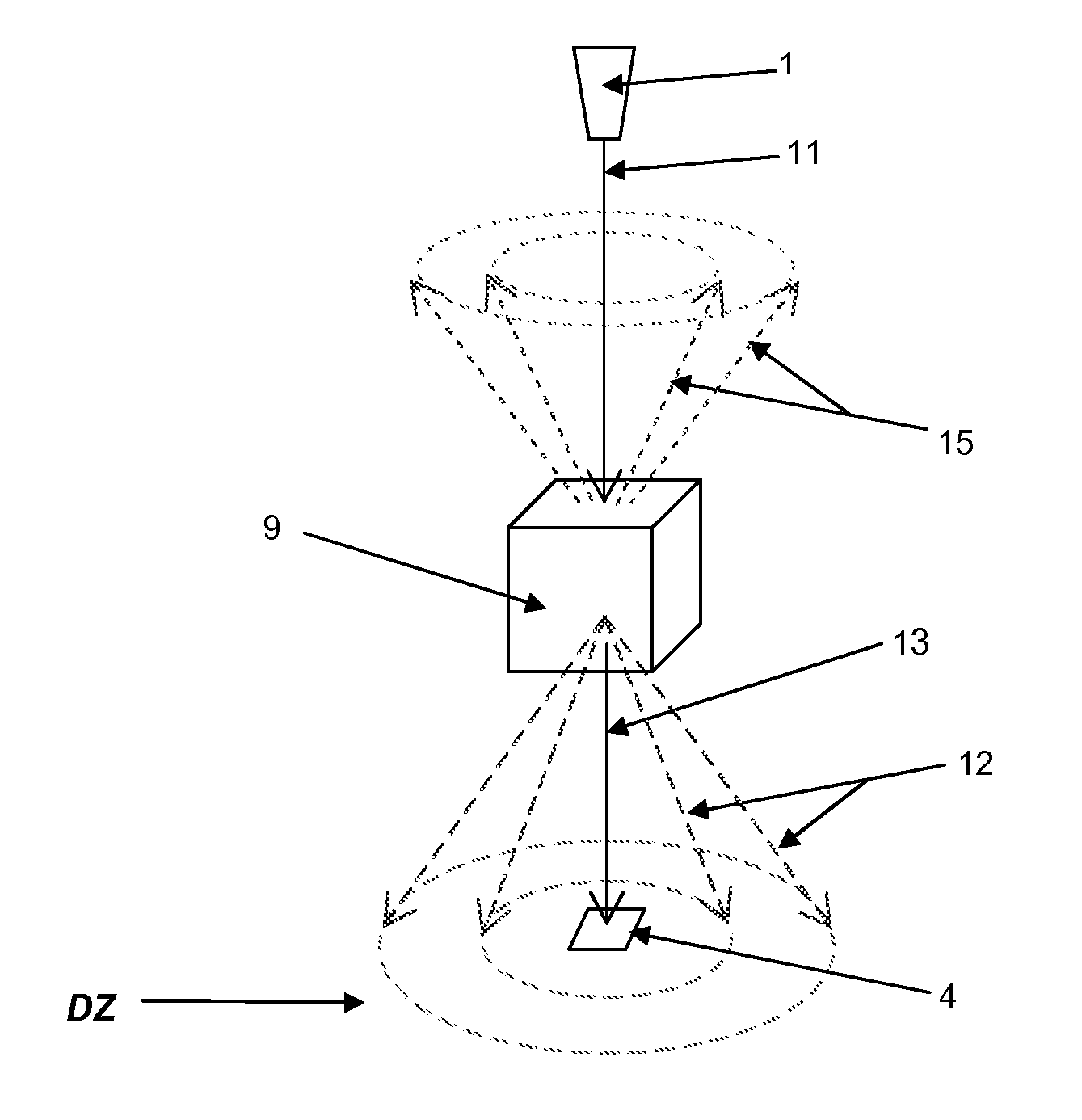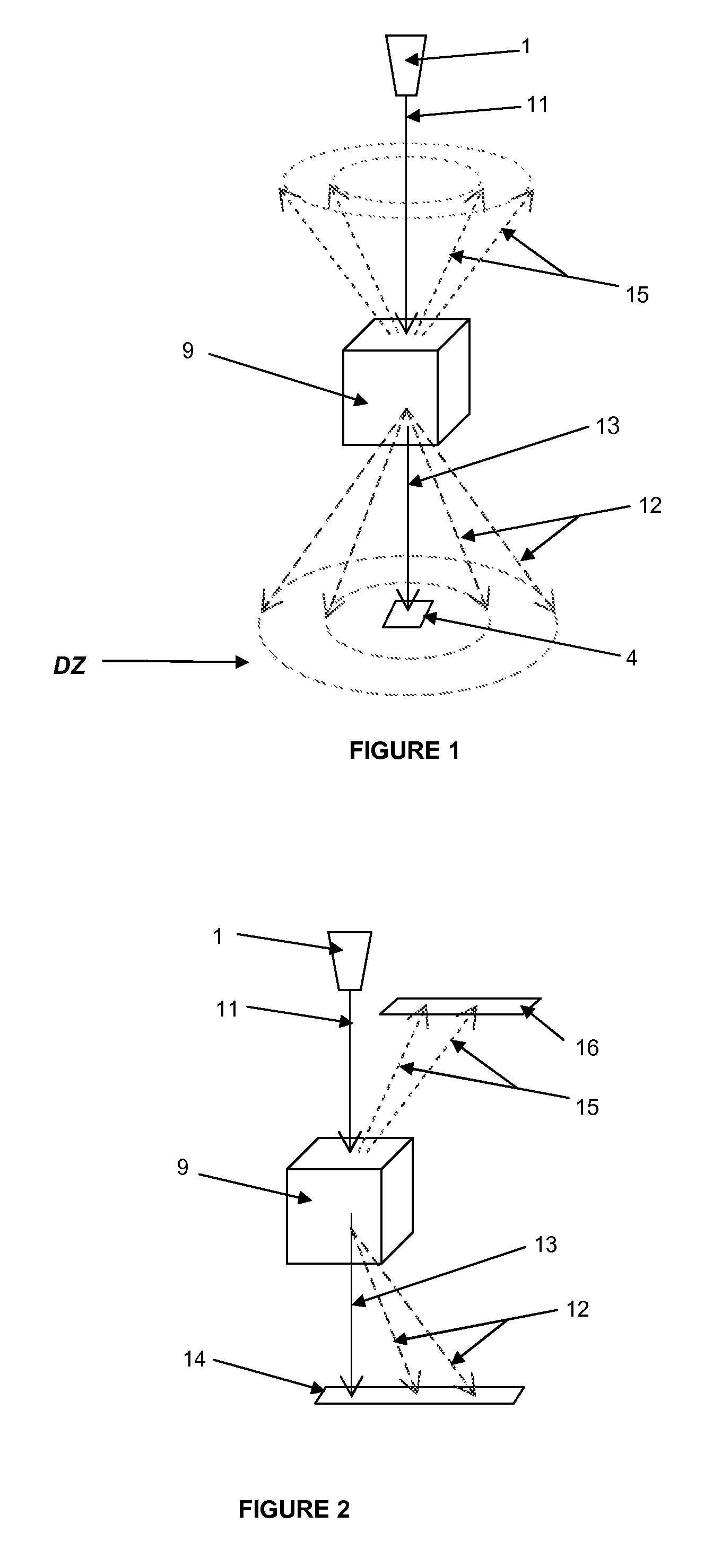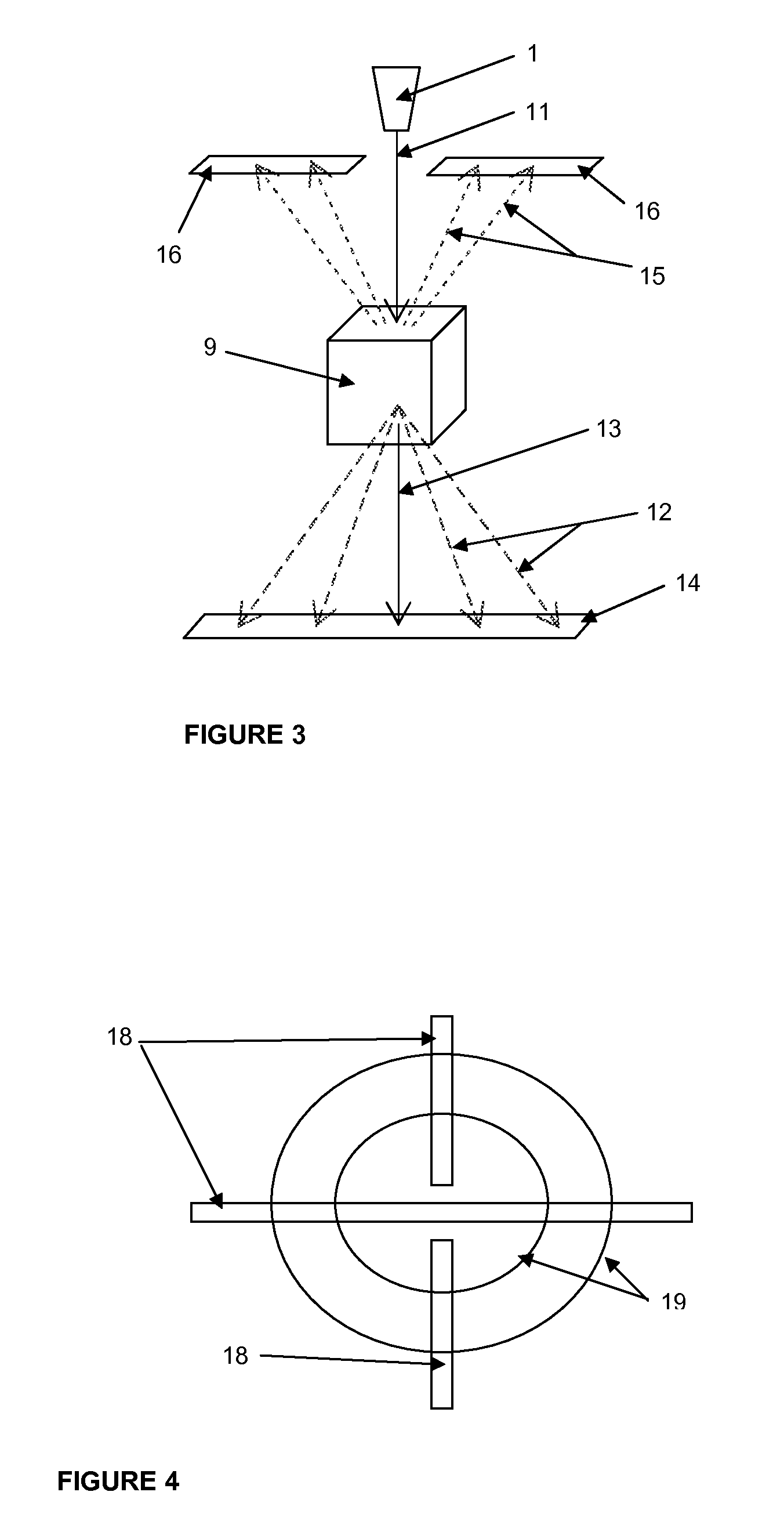Apparatus and method for characterisation of materials
a material and apparatus technology, applied in the field of apparatus and methods for the characterisation of materials, can solve the problems of not always collecting data in such a way, devices can still be confused, and generally will not give any information concerning
- Summary
- Abstract
- Description
- Claims
- Application Information
AI Technical Summary
Benefits of technology
Problems solved by technology
Method used
Image
Examples
Embodiment Construction
[0098]Referring to FIG. 1, a suitable x-ray source 1 is used to direct x-rays via a scanning zone in the direction of a detector 4.
[0099]The detector 4 comprises material capable of spectroscopic resolution of incident x-rays, and in the specific example comprise cadmium telluride although the skilled person will appreciate that other material selections may be appropriate. To exploit this spectral resolution, the x-ray source 1 emits x-ray across a broad energy spectrum.
[0100]The radiation source 1 must produce a distribution of energies across a suitable spectral range for characteristic scattering, and is typically an x-ray source. Tungsten is the most appropriate target, but others could be used.
[0101]Alternatively, use may be made of a plural source. In an example this could be an x-ray source collimated to produce a pencil beam with a designed spectrum of operation of around 10 to 50 keV and at least one higher energy radioisotope source, for example at above 100 keV. In the e...
PUM
| Property | Measurement | Unit |
|---|---|---|
| energy | aaaaa | aaaaa |
| energy | aaaaa | aaaaa |
| energy | aaaaa | aaaaa |
Abstract
Description
Claims
Application Information
 Login to View More
Login to View More - R&D
- Intellectual Property
- Life Sciences
- Materials
- Tech Scout
- Unparalleled Data Quality
- Higher Quality Content
- 60% Fewer Hallucinations
Browse by: Latest US Patents, China's latest patents, Technical Efficacy Thesaurus, Application Domain, Technology Topic, Popular Technical Reports.
© 2025 PatSnap. All rights reserved.Legal|Privacy policy|Modern Slavery Act Transparency Statement|Sitemap|About US| Contact US: help@patsnap.com



